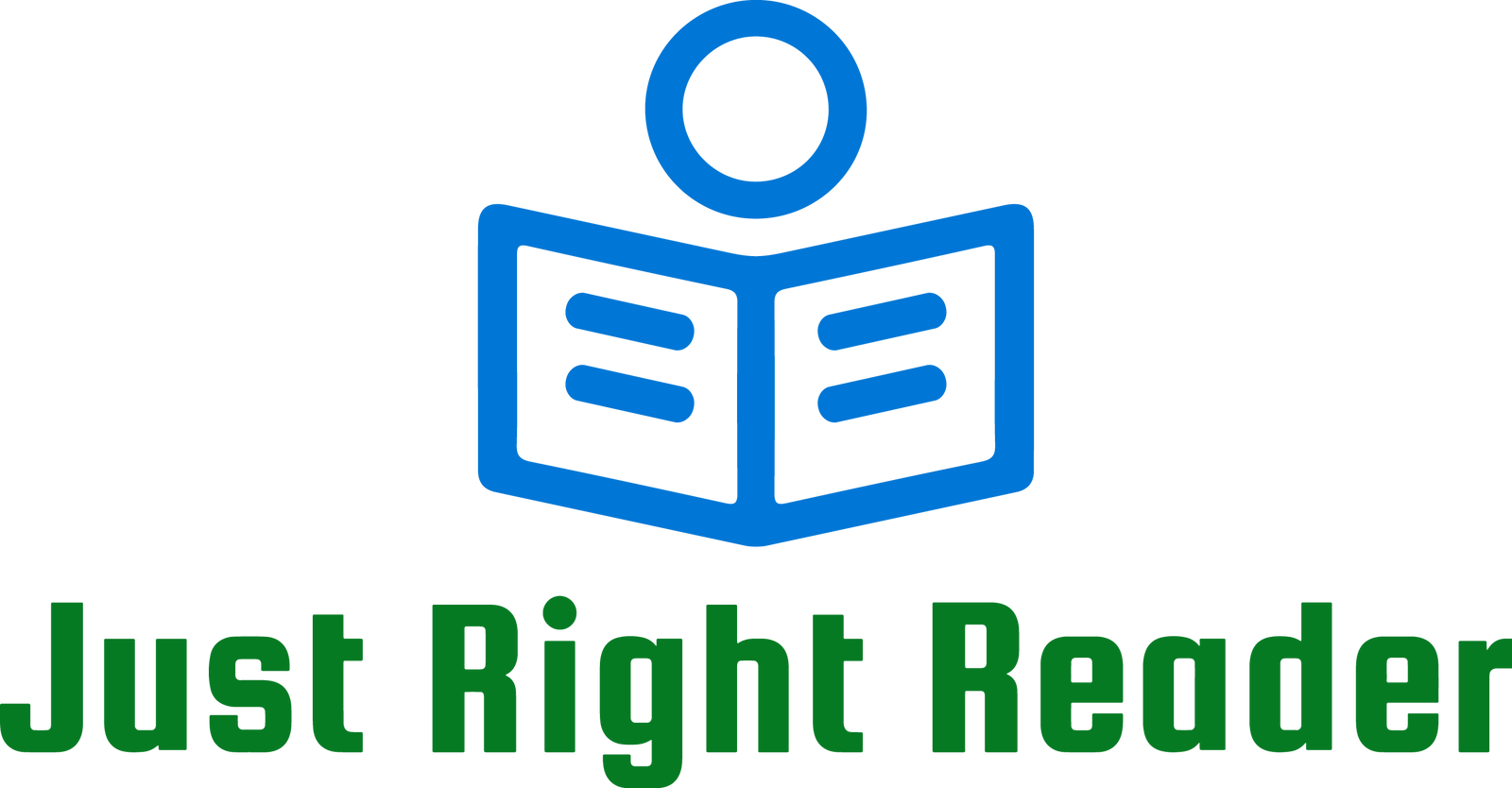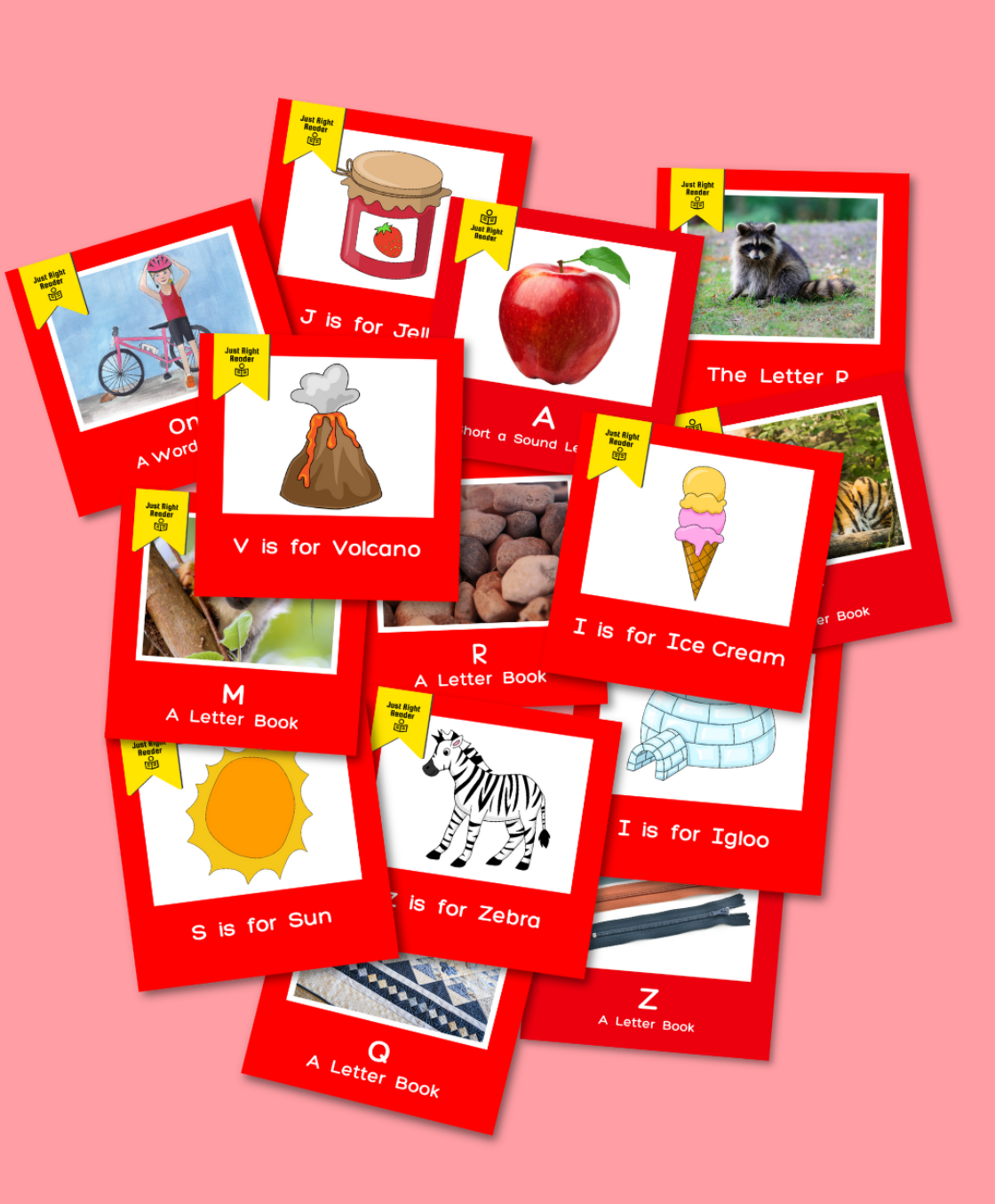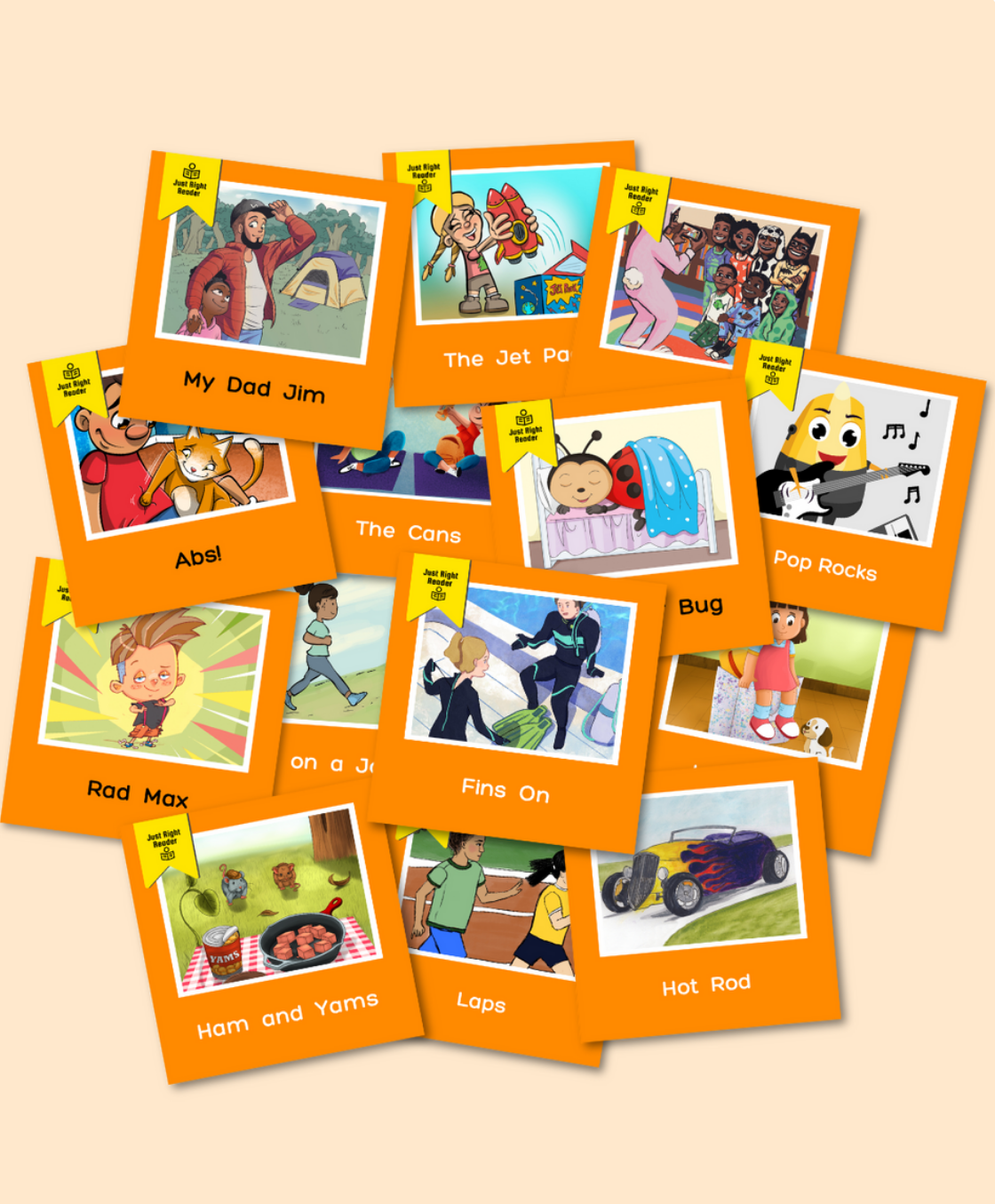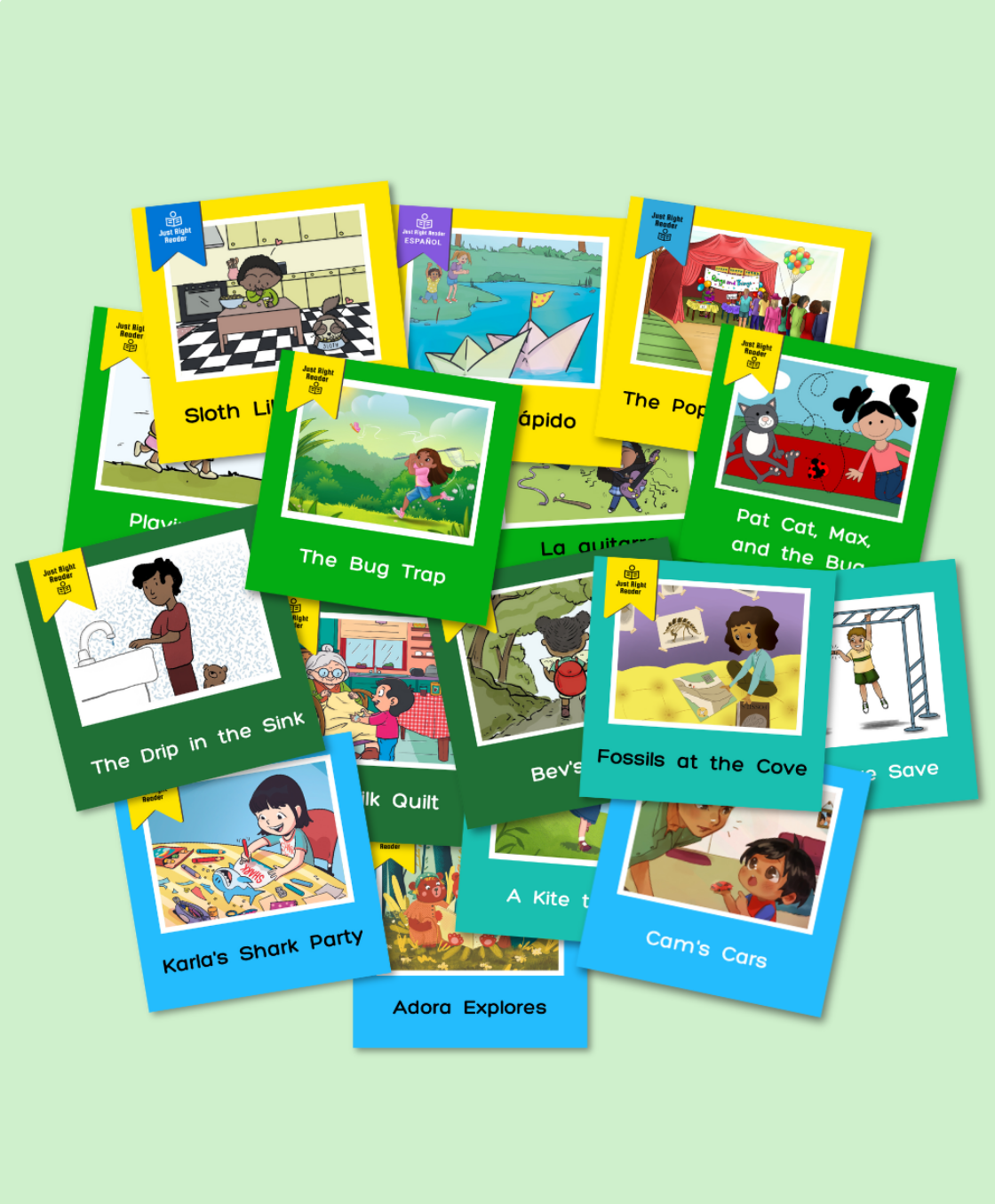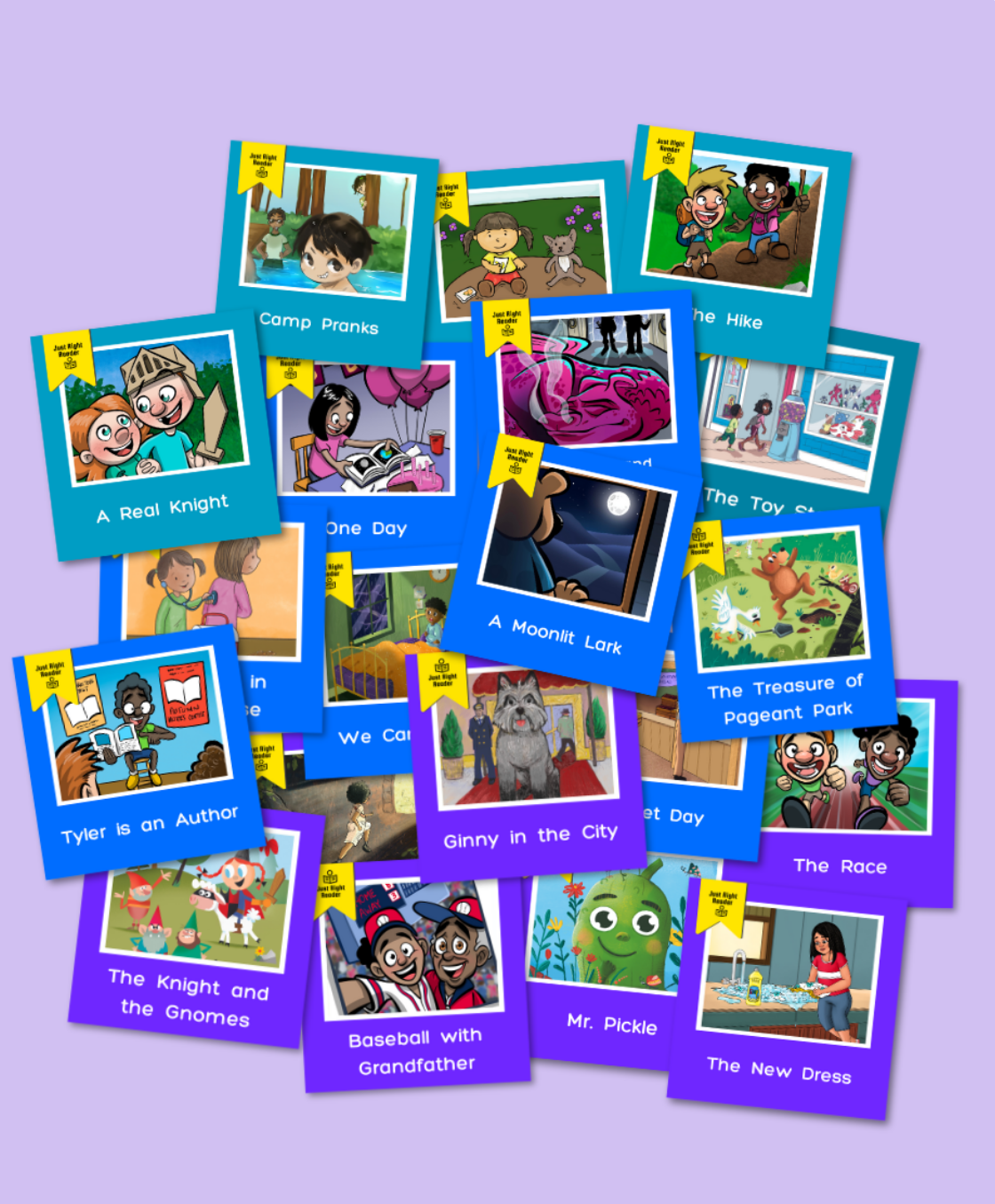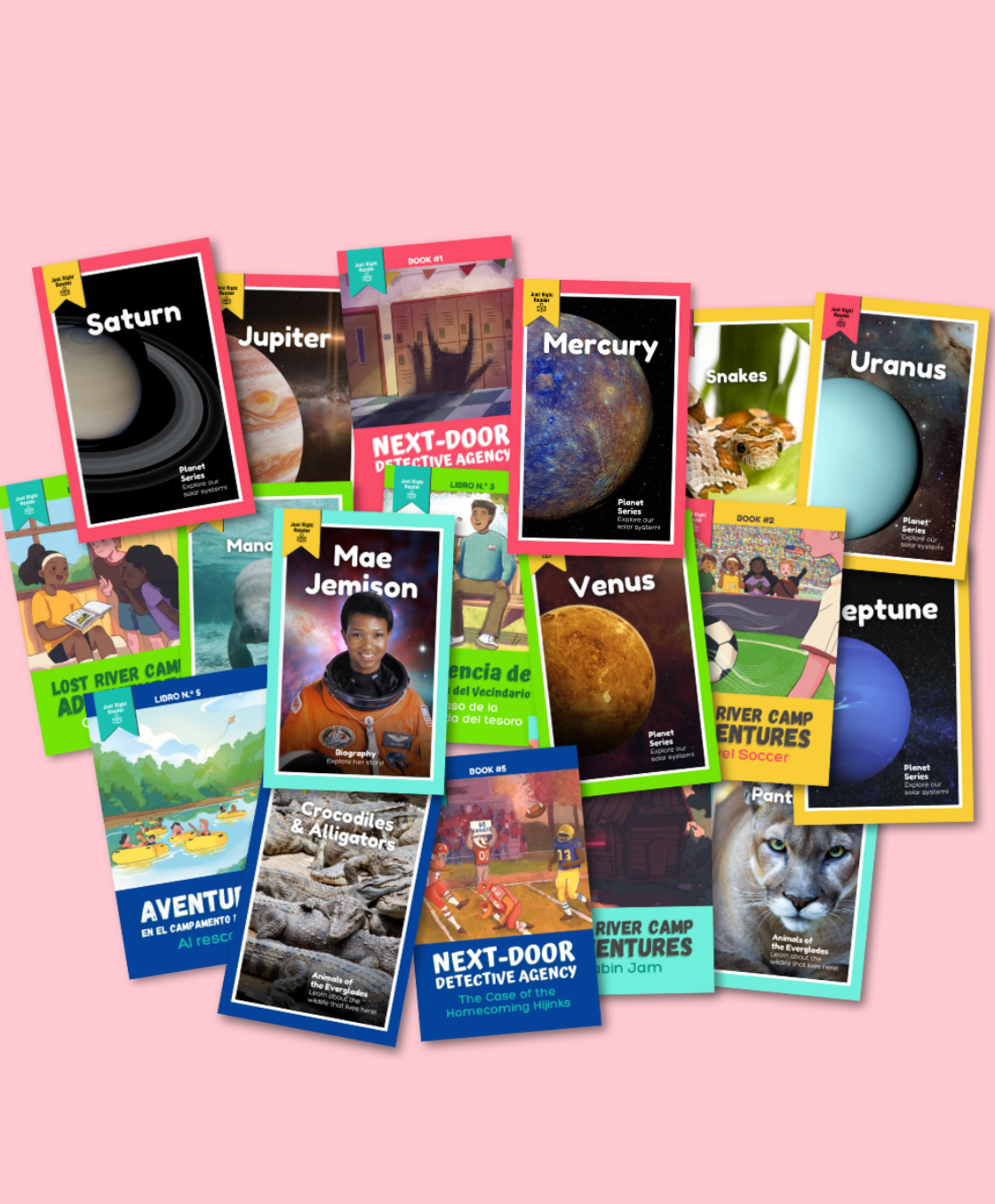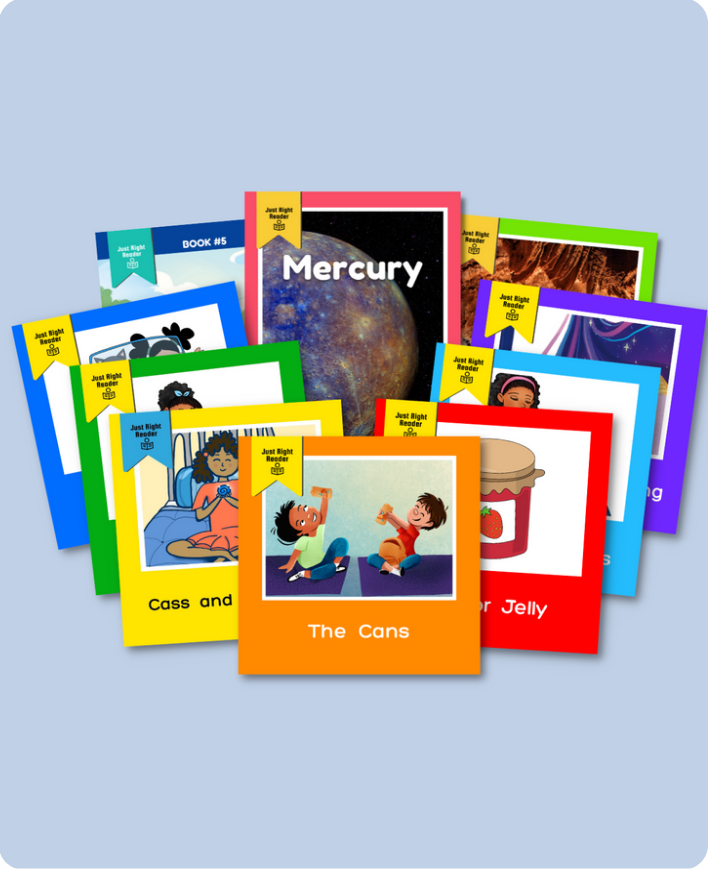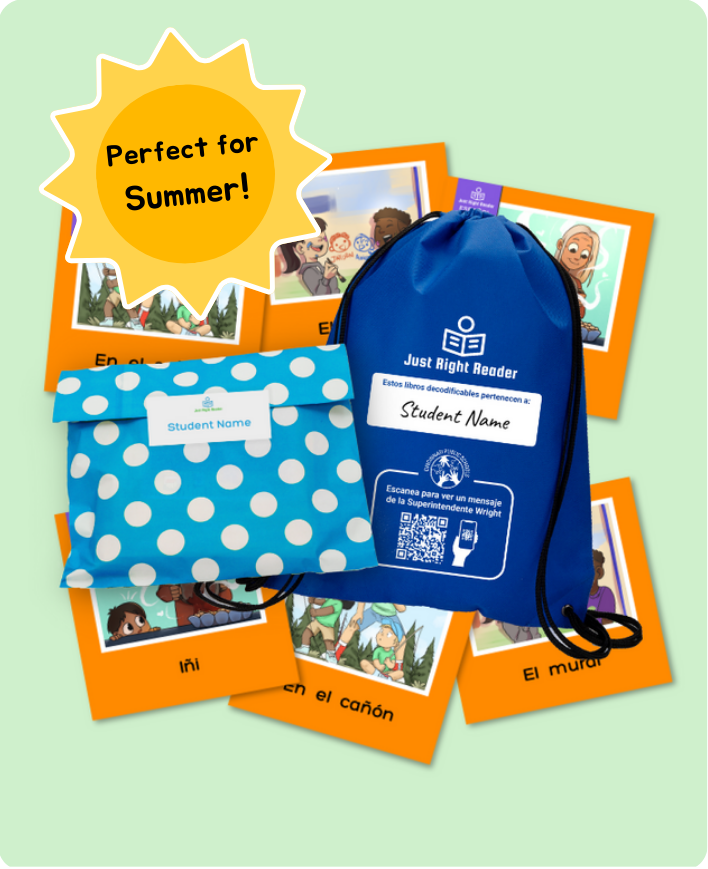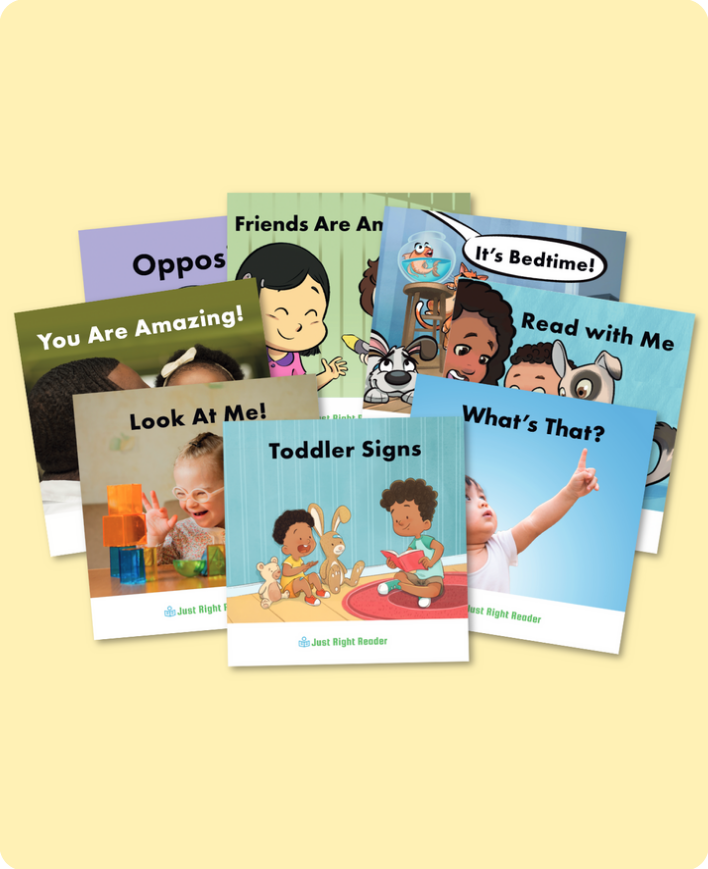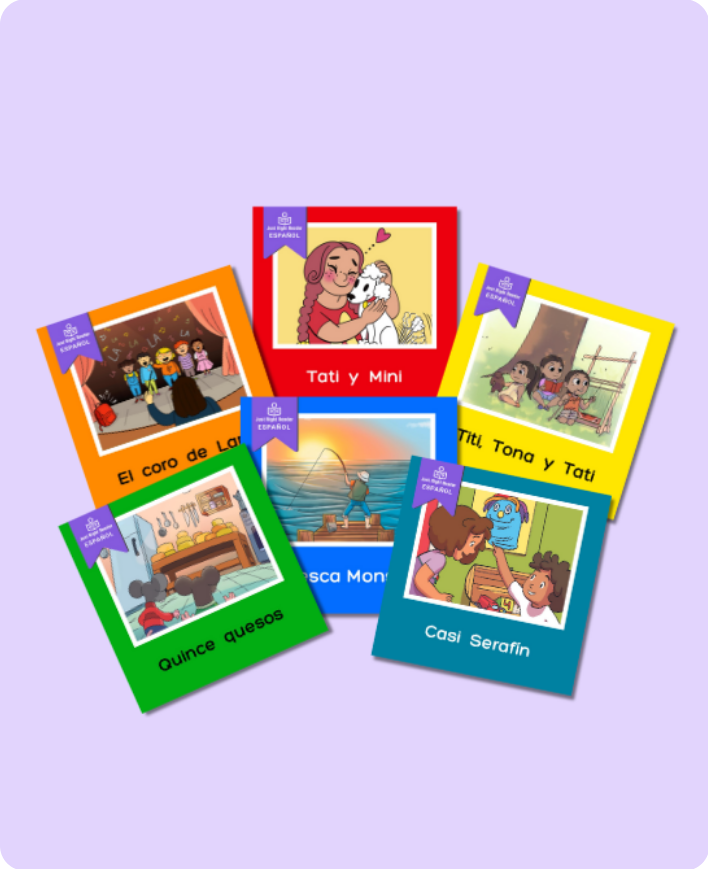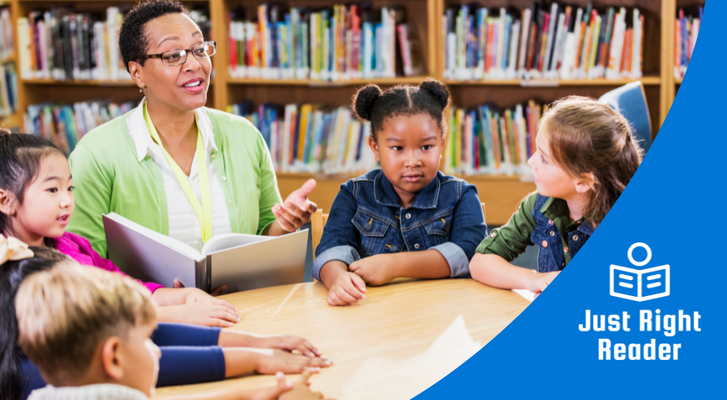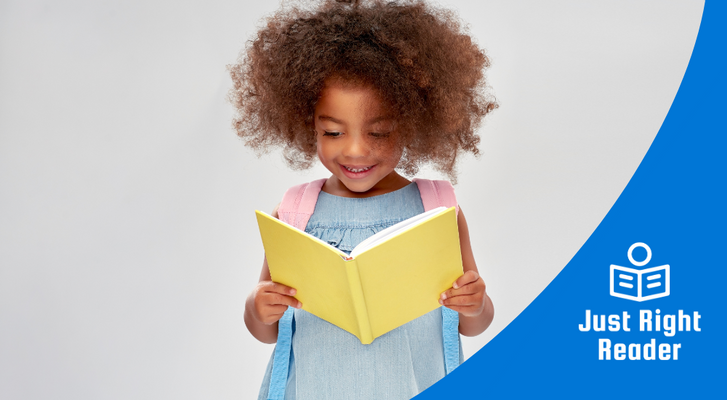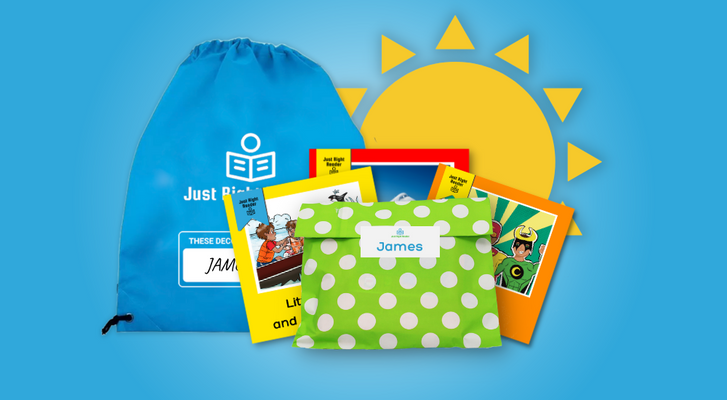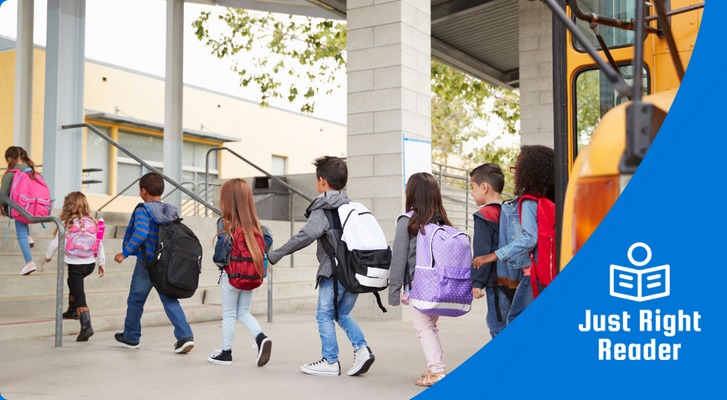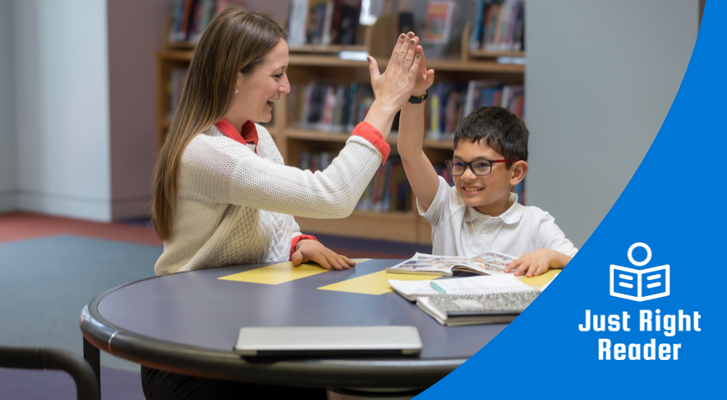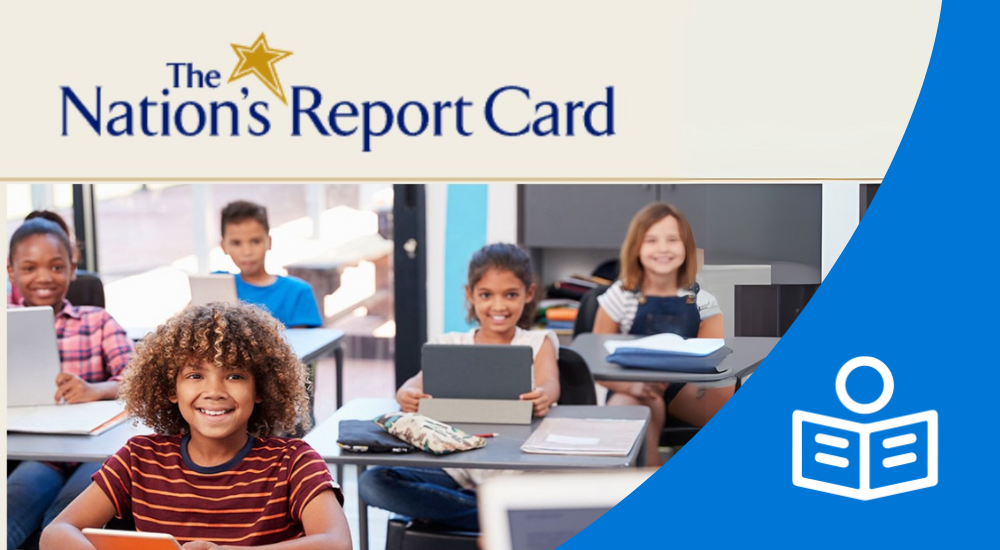
The latest NAEP scores are in, and reading assessments reflect a continued downtrend in literacy rates all across America. This is no surprise to educators. Many states across the nation have already begun to readjust their approach to literary instruction; this includes implementing practical strategies, providing teacher support, and reigniting a love of reading.
Read more about what the 2024 Nation’s Reading Report Cards for 4th and 8th grade reveal, and how they impact the future of reading instruction in K-12 education in 2025.
Key Takeaways
- What is the NAEP National Report Card and Why Does it Matter?
- 2024 NAEP 4th and 8th Grade Results
- Just Right Reader Science of Reading Resources to Promote Literacy Achievement
What is the National Assessment of Educational Progress (NAEP)?
Also referred to as theNation’s Report Card, theNational Assessment of Educational Progress (NAEP) is thought to be the gold standard assessment for measuring U.S. students’ skills in math and reading. These reports are useful for providing trend results over periods of time. For over 50 years, the NAEP has been helping policymakers and educators make informed decisions about educational policy, spending, curriculum development, and teaching strategies. This governing board does not specifically advocate a particular approach, but it does provide important measurable indicators of student achievements.
NAEP data matters for all K-12 literacy instruction because it informs policy decision-makers about curriculum and resources while promoting accountability within the American education system.
View The Nation’s 2024 Report Card
Data shows that national reading scores declined three points in 4th and 8th grade in 2022 compared to 2019, and then dropped again in 2024.
Select the jurisdiction below for each state.
NAEP Reading Assessment Framework
TheNAEP Reading Assessment Framework provides a detailed blueprint of skills students should have in 4th and 8th grade for successful reading achievement. Content knowledge is measured with well-designed questions, developed from highly-researched international assessments and state standards. By analyzing results across grade levels, we gain insight into understanding reading achievement nationwide.
The reading framework has three main goals:
- Tracking reading achievement over time.
- Monitoring student progress at various achievement levels.
- Identifying and addressing achievement gaps.
These three goals are important components that measure trends in academic student achievement, so understanding what they mean helps us to get back on track as educators reassess how to move forward and raise our national reading scores.
Tracking Reading Achievement Over Time
When we examine the 2024 NAEP scores, it's crucial to keep in mind the context of the COVID-19 pandemic. The 4th graders tested in 2024 were in kindergarten or 1st grade during the initial disruptions of the pandemic, while the 8th graders were in 4th or 5th grade at that time. For both groups of students, they lost critical years in literacy development. Kindergarten and 1st grade are critical years for developing foundational phonics skills, while 4th and 5th grade focus on strengthening students' comprehension abilities.
-
4th graders missed kindergarten and 1st grade foundational skills, which are proven to be the building blocks for reading success.
-
8th graders missed comprehension and fluency practice to develop critical thinking skills for complex texts
More Screentime
Other factors to declining NAEP scores may include the increase of screen exposure for students. Edweek recently posed this same question -Is Too Much Screen Time, Too Early, Hindering Reading Comprehension? Many educators and parents have battled with the rise of the use of AI, smartphones, and tablets both inside and outside the classroom. Parents, teachers, and researchers are asking the bigger question of how overstimulation through technology is impacting the students’ brains, attention spans, and the ability to read and comprehend longer passages.
Less Classtime
Reported absenteeism in 2024 has decreased from the previous 2022 NAEP Report. This is likely due to the relaxation of health protocols during the peak of the pandemic. However, the current attendance trends still are concerning, since there is a more lighthearted attitude towards missing school. Kids need to be present to truly learn and engage in classroom activities.
Monitoring Student Progress at Various Achievement Levels
NAEP has been closely monitoring progress across all levels to figure out what teaching methods are working or not working. The unfortunate truth is that a historically large percentage of students are now below NAEP Basic Levels.
-
40% of all 4th grade students and 33% of all 8th grade students are scoring in the lowest range for overall reading achievement level.
-
Fewer than 50% are actually achieving grade level proficiency standards.
Declining Trends
Despite 2024’s declining trends, high performing students continue to score well while underperforming peers in the 25th and 10th percentile are at the lowest levels they’ve been in decades. Over time, these students are falling further behind. There is an urgent need for change in our instruction. Too many of our students are facing tremendous challenges when it comes to reading achievement and we need to understand why. This begs the question: what hinders high performing students’ success in reading?
Kindergarten, First, and Second Graders On Track
Recently, there are promising signs of reading recovery in just over half of the US students in K-2nd grade meeting grade-level reading achievements. This is largely due to the national push forScience of Reading laws being implemented in many states. According toEdweek, “... this legislative trend was spurred on by the success of Mississippi, which saw big gains in its 2019 NAEP reading results after making a host of changes to reading curriculum, teacher-training methods, and instructional coaching starting in 2013” (Schwartz, 2025).
Historically Marginalized Students
Students from marginalized groups, including those from low-income backgrounds andEnglish language learners, have historically been disproportionately impacted. It’s worth noting that the 2024 NAEP scores show Black students made reading gains from 2022, while narrowing the achievement gap compared to their White, Hispanic, and Asian peers. However, Hispanic students’ results indicated a decline in reading following a decline from 2022. It is crucial at this point to take this data and use it to create a significant impact in reshaping our educational policies and the K-12 education system.
States are Taking Action
Now, at least 40 states are implementing laws or policies to require schools to use evidence-based methods in literacy instruction as they monitor the national reading crisis. States are taking action, and providing funding and professional learning in high quality materials to better support educators and families with literacy instruction.
Hover over each state to view legislative laws.
Identifying and Addressing Achievement Gaps

The students who have shown the most significant growth are in schools prioritizing high-quality reading programs, likeJust Right Reader’s Science of Reading Take-Everywhere Literacy Packs andScience of Reading Classroom Libraries.These high quality instructional materials paired with personalized, data-based, and targeted instruction can make a big difference in future implementation and instruction– especially in closing the achievement gaps between our highest-performing and lowest-performing students. At Just Right Reader, we believe in empowering educators, teachers, and families so they understand how children learn to read. This is the key to unlocking literacy potential, making informed choices, and creating supportive learning environments to build confident, skilled readers.
Upcoming Just Right Reader Professional Learning
Just Right Reader’s Science of Reading Webinars and Symposiums include our latest data and research, with actionable strategies that you can use to raise reading achievement for all students. Stay updated on the current events, held by our Science of Reading researchers.
We offer a variety of learning opportunities and resources grounded in the Science of Reading to fit your needs and schedule.
- The Art and Science of Teaching Reading Fluency, with Dr. Tim Rasinski, to gain insights and strategies in response to NAEP findings, February 19, 2025 | 3:00pm - 4:00pm PST

You can also:
- Join our free webinars led by renowned experts and gain practical strategies to implement in your classroom.
- Tune in to our live podcast to hear from district leaders and researchers about what educators are doing to accelerate reading achievement in Science of Reading Leadership: Guiding Minds, Transforming Lives powered by Just Right Reader.
-
Host a customized symposium at your school or district and empower your teachers, families, and staff with the latest research and best practices.
Want to learn more regarding the 2024 NAEP report?
Please fill out this form and tell us which professional learning topics you want to learn about. Help us make a difference!
